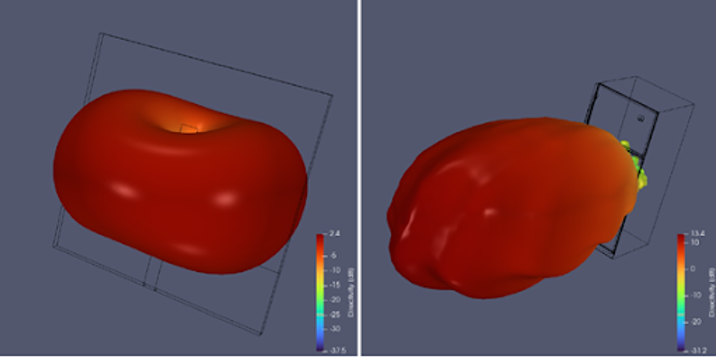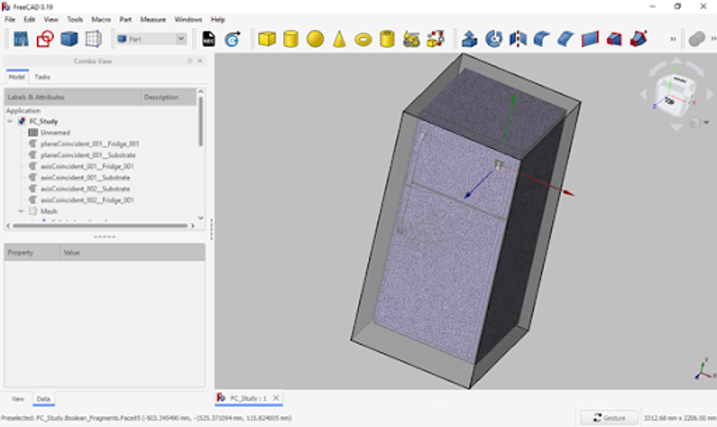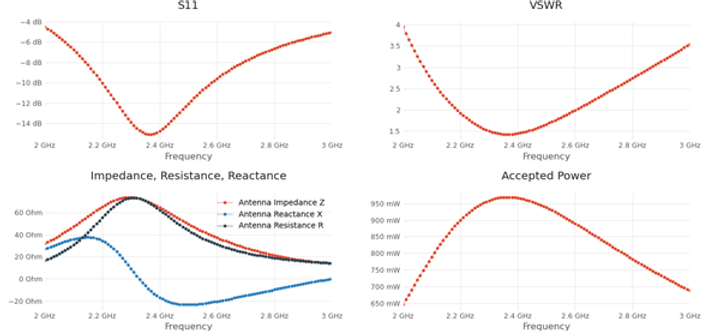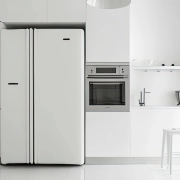IoT applications and microstrip antenna in the smart refrigerator
Nowadays, smart devices, as well as Internet of Things (IoT) applications, are becoming more and more common in people’s daily lives. These types of devices are generally connected to other devices or networks through different wireless protocols. where it is essential to have efficient antennas that adapt to different shapes.
Microstrip antennas are small in size, light in weight, and easy to integrate to both flat and non-flat surfaces, as well as being simple and inexpensive to manufacture on a large scale, which is why they are useful in IoT devices.
The Internet of Things represents a universe of business possibilities in different areas thanks to its automation and optimization qualities. Focusing on smart home devices, today’s market offers countless home automation options that you could buy and use.
A microstrip monopole antenna was designed to work on the 2.4GHz frequency and be used for data transmission and reception in a smart refrigerator. With CENOS Antenna Design software it was possible to observe the behavior of the antenna individually and how it changes when it’s placed on the surface of the fridge.
In the first scenario, an omnidirectional radiation pattern was shown, while in the second, it can be seen how the radiation pattern changes and has a higher directivity because of the proximity of the fridge, so if you want to control the refrigerator from a smartphone or another device to which it’s connected, the transmitted signal from the antenna will have a greater range in front of the fridge where the antenna was placed.

3D radiation pattern without of the antenna without/with the fridge
The meshing for the simulation can be generated automatically with CENOS, however, it is also possible to make manual changes to the mesh dimensions. A fine simulation mesh can always be used, although, it must be taken into account that as the number of elements of the mesh increases, the amount of time in the calculation processes becomes longer. In cases like this one, the user can make the mesh dimensions smaller in areas of interest such as the antenna, and larger in areas such as the refrigerator.

Mesh created in FreeCAD
The simulation parameters included a frequency sweep from 2GHz to 3GHz, the materials that make up the antenna and the material of the fridge surface.
The simulation process took about 2 hours taking into account 150 points in the frequency sweep.

2D plots of the antenna without the fridge
The rise in the use of IoT technology creates new requirements in terms of antenna performance and design, with space and cost being some of the key components in the design, manufacture and use of wireless systems. CENOS Antenna Design simulation software allows the design of both the antenna and the structure in which it is placed in order to obtain results that are closer to reality. This way it is possible to know whether or not it’s necessary to make changes in the geometry of the design, in the types of materials, or other factors.

E-field distribution of the antenna with/without the fridge
It also presents 2D graphs that allow you to appreciate parameters such as the reflection coefficient of the antenna, which helps to know how efficient it is. A properly designed and built antenna will improve data transfer rate, increase range, and generally offer an improved user experience. The use of antenna simulation software allows to significantly reduce experimental costs.


